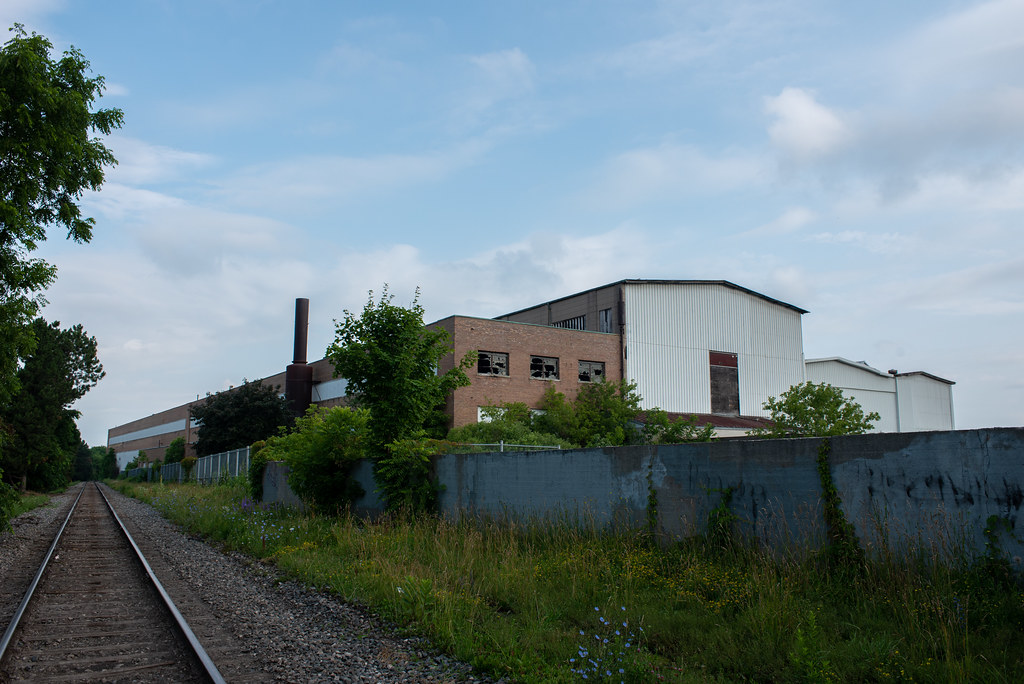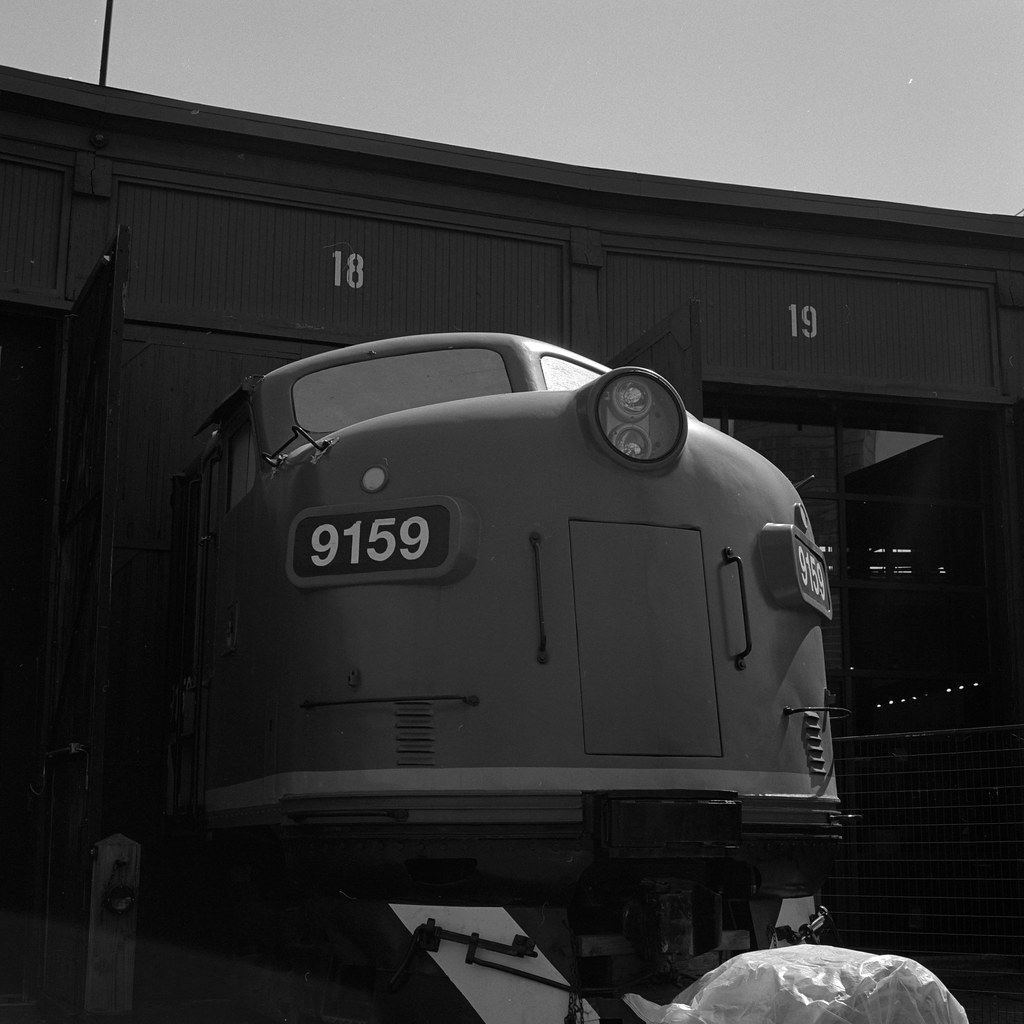The late 19th century brought the final push to extend out the transcontinental line. The arrival of the 20th century, the Canadian Pacific Railway was the only line that extended across Canada, at least from Vancouver to Montreal. In Ontario, Grand Trunk managed to secure itself as the big player in the province by absorbing all the competition but could not do that with Canadian Pacific finding itself against a competitor that it simply could not buy out. This was the golden age of rail travel when mighty steam locomotives travelled across the country; rail networks connected people and places, mail and cargo were easily moved. Trains opened up northern Ontario and made the Silver Rush at Cobalt and later the Gold Rush in Timmins possible. But the change would be coming sooner than anyone would think.

Nikon D750 – AF-S Nikkor 28-70mm 1:2.8D
Nikon D750 – AF-S Nikkor 28-70mm 1:2.8D
Nikon D300 – AF-S Nikkor 14-24mm 1:2.8G
By the start of the new century, Grand Trunk, captained by Charles M. Hayes, had finally started to turn a profit. Under Hayes, the rail operator began a large scale modernization effort. Older stations were replaced with new ones, plans were made to update the extensive maintenance facilities, and more importantly, new faster locomotives to run longer, heavier trains further. Similar projects were undertaken by Canadian Pacific, but unlike Grand Trunk, their station modernization, especially at further afield, a more uniform approach to station design was taken. To construct an alternative transcontinental line, Canadian Northern Railway reached further west, and their line from Manitoba reached Port Arthur (modern-day Thunder Bay) in 1901. Seeing the advantage of a second transcontinental line, the federal government decided to approach Canadian Northern and Grand Trunk to work together to complete such an effort, with heavy funding from the government. While Grand Trunk was not opposed to such a project, they had no desire to work with another company. Instead, they extended an offer to Canadian Northern to outright buy their network. Canadian Northern’s shareholders turned down the offer. In response, Grand Trunk chartered Grand Trunk Pacific, and the federal government now funded both Canadian Northern and Grand Trunk Pacific. By 1904, Michigan Central’s hold over Canadian Southern would see a 99-year extension, making a rail tunnel under the Detroit River between Detroit and Windsor a wise idea. The Great Toronto Fire of the same year destroyed a great deal of the city’s downtown, but the one building that escaped the fire was the eye-sore Union Station, but it did open up a large amount of property next door. Grand Trunk and Canadian Pacific struck a deal to construct a third union station next to the second, forming the Toronto Terminal Railways, each operator holding 50% of the shares. The trouble was that neither could agree on the design and layout and faced difficulties from the city on track routing. Grand Trunk also began working on a new Union Station in Ottawa, Headquarters in Montreal, plus opening a vast expansion to their Stratford Motive Power shops. Work on the Grand Trunk Pacific line began in 1907 while Canadian Pacific improved their route through the Rockies. Much of the work involving blasting new spiral tunnels to replace former steep grades. Both Canadian Northern and Grand Trunk Pacific moved fast to complete their lines, but to the surprise of Canadian Northern, Grand Trunk moved far quicker than they expected, sinking both companies deep into debt. The Michigan Central tunnel opened to train traffic in 1910, allowing a far easier way to move goods across the river than even a bridge or rail ferry. The Kingston & Pembroke Railway ended up in the pocket of Canadian Pacific. The reason is that easy access to the Canadian Locomotive Company produced many locomotives for Canadian Pacific. In 1912 the sinking of the RMS Titanic and the mass loss of life took the world by surprise. Among the lost, Charles Hayes travelled back to Canada to look at the new financial crisis brewing within Grand Trunk. Despite these cost overruns and falling deeper into debt, the Grand Trunk Pacific line hit the west coast in 1914.

Graflex Pacemaker Crown Graphic – Schneider-Kreuznach Symmar-S 1:5.6/210 – Kodak TMax 100 @ ASA-64 – Blazinal (1+25) 5:30 @ 20C
Nikon D750 – AF-S Nikkor 28-70mm 1:2.8D
Nikon D750 – AF-S Nikkor 28-70mm 1:2.8D
And in time, Canada went to war, almost every industry moved quickly to get onto a war footing, and soon capital and workers dried up as the war in Europe escalated well beyond the ending in Christmas of 1914. Troop trains moved the Canadian Expeditionary Force members from across the nation to embarkation points at Canada’s coasts. The new Union Station project ground to a halt, having started that year, leaving the existing station groaning under a daily trainload of 150 trains and 40,000 passengers. Trains also moved food, goods, war materials and eventually those labelled enemy aliens to internment camps. Despite this, as the war dragged on, Canadian Northern completed their line in 1916, and Canadian Pacific opened their new North Toronto flagship station to take some of the pressure off the Grand Trunk Union Station. Canadian Northern wanted to continue extending east opened a new maintenance facility in Leaside. But the money was gone, and even when the government came calling to collect, Canadian Northern had nothing. Ottawa had the answer, not wanting to lose a valuable asset and, more importantly, losing it during wartime seized Canadian Northern and put it under national control using their management firm, Canadian Government Railways. The firm, nearly a loosely connected group of defunct railways, continued to operate independently but with government-appointed boards. With Canadian Northern, they could dump everything on a tested operator. Grand Trunk Pacific quickly joined Canadian Northern in the Government hands. When the war ended in 1918, even Grand Trunk was on the ropes, and the government soon took action to prevent a significant disruption with the largest operator in Ontario. The trouble came when the British investors raised being paid for their shares, eventually taking the matters to the courts. It was here that the truth about Grand Trunk came out, they were cooking the books, and the investors walked away with nothing. In 1923 Canadian Government Railways received a full charter as a Crown Corporation, calling themselves Canadian National Railways. And the new companies first monumental task was the centralization and streamlining of a vast and complex network of trains, rails, and properties. And they moved quickly, duplications were removed, surplus equipment sold off, and properties demolished. The project that did get moving again and had a grand opening in 1927 was the new Beaux-Arts Union Station in Toronto, attended by King Edward VIII. Although work continued into 1931. In 1929 Canadian National introduced a pair of diesel-electric locomotives, running an eight-car train from Montreal to Vancouver with minimal interruption. Quickly smaller branch lines became proving grounds for a new idea, the self-propelled car, rail diesel car (RDC) or more familiarly doodle-bugs.

Nikon D750 – AF-S Nikkor 28-70mm 1:2.8D
Nikon D750 – AF Nikkor 14mm 1:2.8D
Nikon F5 – AF Nikkor 35mm 1:2D – Ultrafine Extreme 100 @ ASA-200 – Ilford Microphen (Stock) 9:00 @ 20C
The 1929 stock market crash sent ripples around the entire world; soon, everyone, including the railroads, suffered from the economic downturn. It also did not help that crops also began to fail through the prairies and long trains carried those looking for work, often riding without a ticket. Michigan Central and, by extension, Canadian Southern ended up under New York Central’s control. The two big ones, Canadian National and Canadian Pacific, had become financially stable and debt-free for Canadian operators. But even then, the depression caught up; both began to cut low-traffic lines and even entered a traffic sharing agreement at the darkest point of the downturn. But despite this, both began to use the vast quantities of unemployed citizens to construct grand new stations as make-work projects or improve tracks and other infrastructure on their lines. Canadian National built a brand new station in Hamilton and restored the 1879 Bridge Street Station in Niagara Falls. Both would be visited in 1939 by King George VI and Queen Elizabeth (The Queen Mother) during their Royal tour; both Canadian National and Canadian Pacific would provide the trains to carry the monarchs across the nation. The tour also saw the end of a short piece, and the world again moved to war that same year. Both Canadian National and Canadian Pacific moved to a war footing; trains moved soldiers and materials to ports for the war that spanned the globe. Canadian Pacific’s Angus Shops constructed Valintine Tanks for the effort. During the war, vast new Northern and Pacific type locomotives were used with the significant effect of pulling longer, heavier trains. But also saw an increase in the use of diesel-electric locomotives for switching duties in yards. Despite needing the same materials for the war effort, these locomotives required less maintenance, crew, and material to operate.
The post-war era saw a changed world; countries like Canada rode high as a new standard of living ensured that many found new homes in the growing suburban spaces outside the large smokey cities.

Nikon D750 – AF-S Nikkor 28-70mm 1:2.8D
Rolleiflex 2.8F – Carl Zeiss Planar 80mm 1:2.8 – Kodak Tri-X 400 (400TX) @ ASA-320 – Ilford Perceptol (1+1) 12:00
Nikon D750 – AF-S Nikkor 28-70mm 1:2.8D
While the jobs remained in the large urban centre’s railways that once used for long-distance travel began to adjust their operations to commuter traffic. These runs were covered by self-propelled Rail Desiel Cars that were once passed off as curiosities formed a new type of passenger traffic. And full out diesel-electric locomotives were starting to replace steam. And as iconic as the steam locomotives were, the new F-Unit road locomotives coming out of General Motors Desiel showed off a new streamlined style. And other traditional locomotive makers were starting to produce locomotives that could work both as yard switchers and on mainline service, with the release of the ALCO RS-1. By the middle of the century, it became clear that steam motive power would be on its way out. Even passenger traffic spiked during the war was starting to decline in the face of improvements in air travel, personal automobiles and more importantly, better-limited access freeways.
Great article and photos. Thanks.